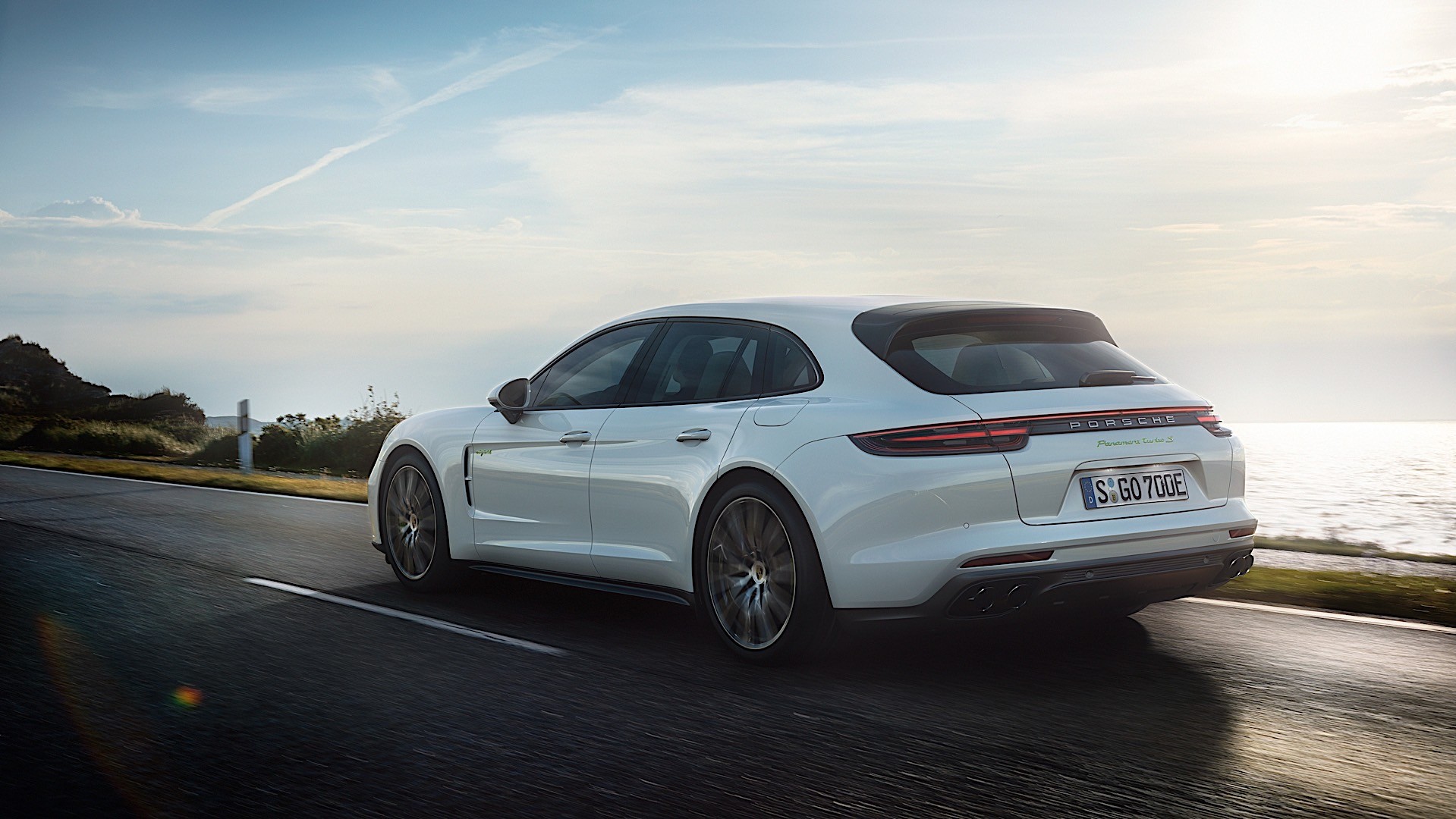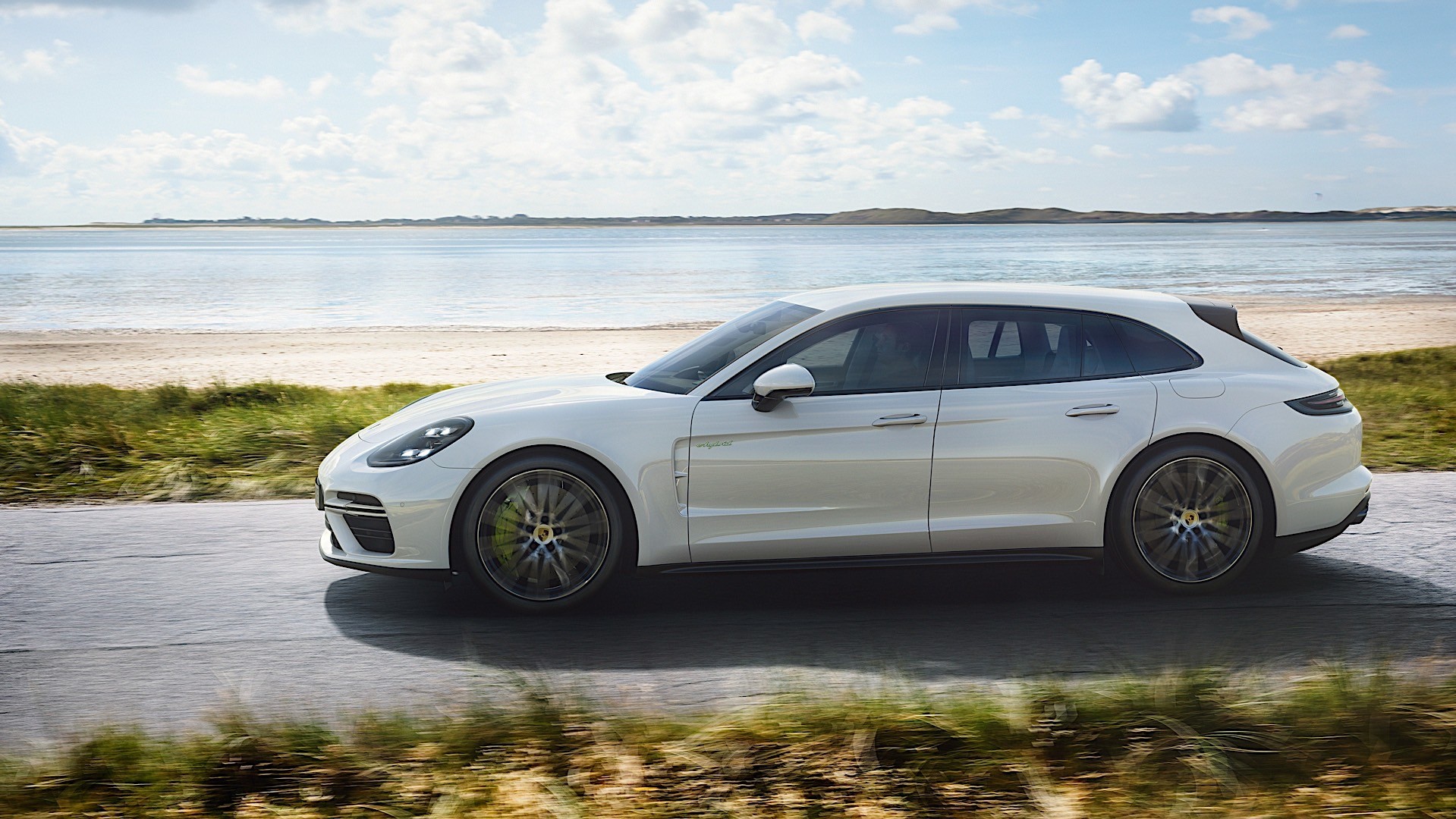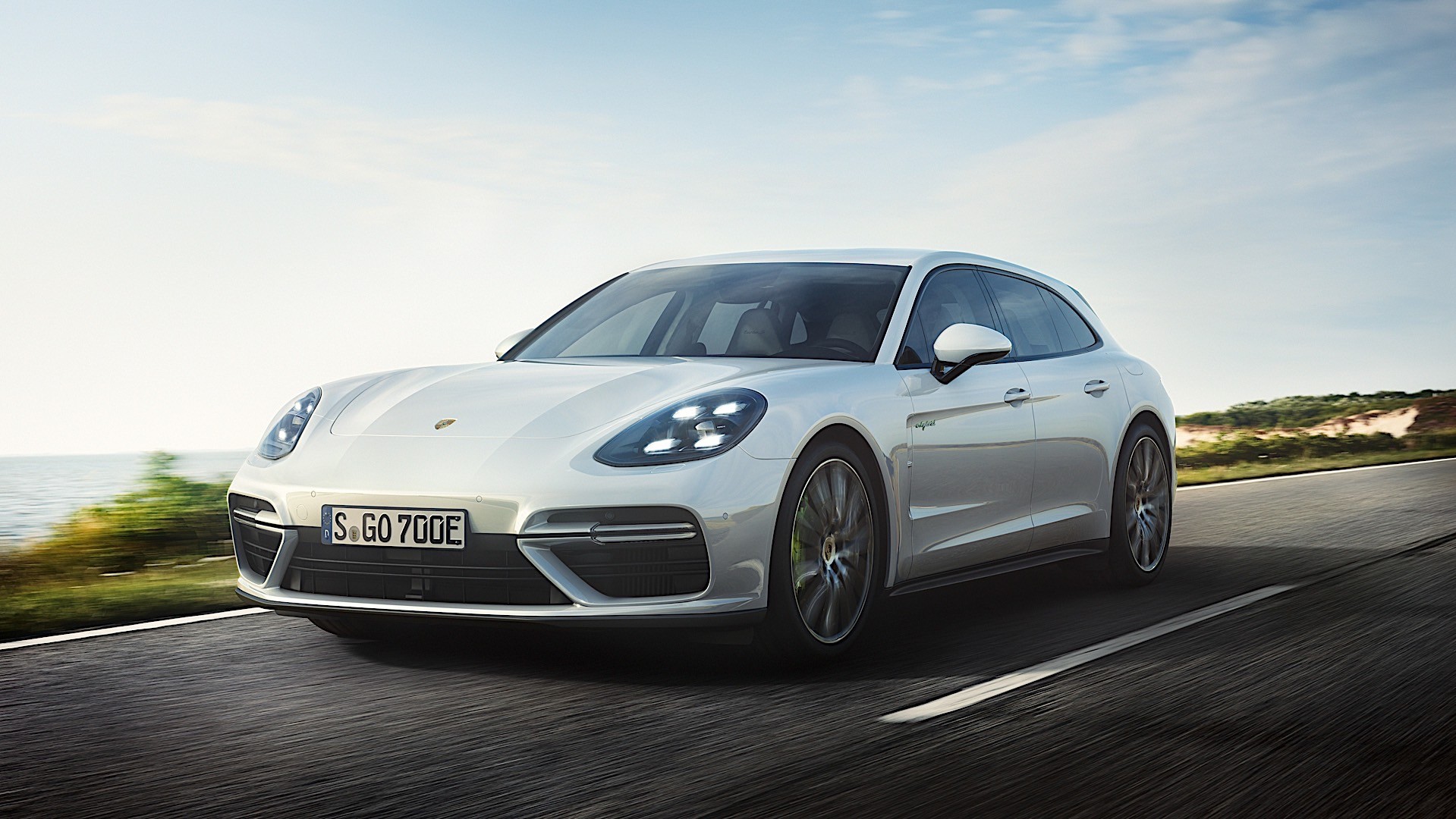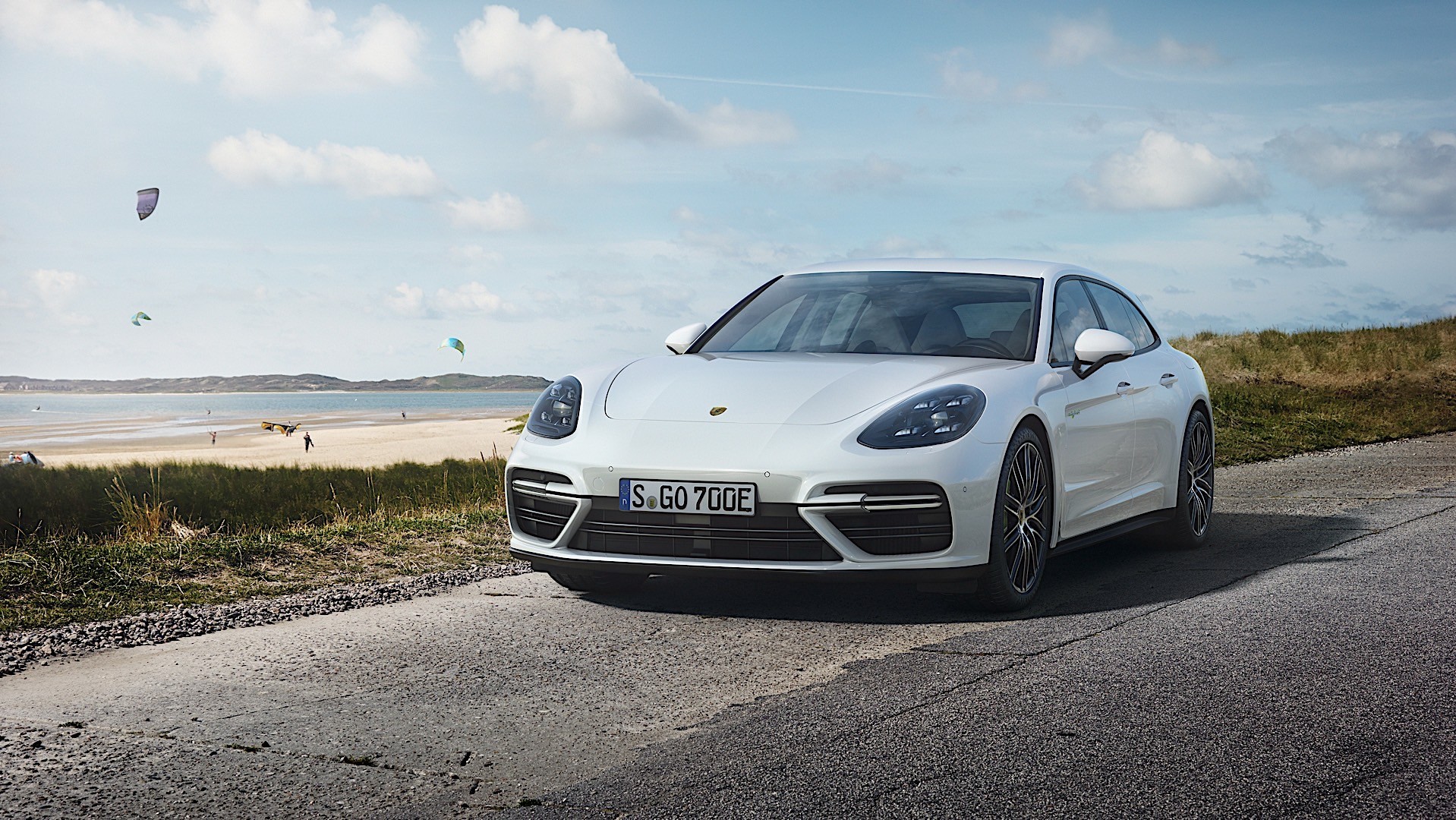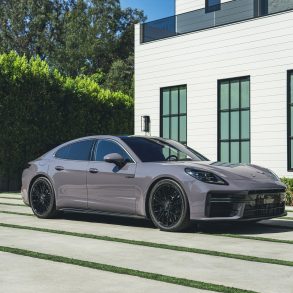(2018 – 2020) Porsche Panamera Turbo S E-Hybrid Sport Turismo – The Ultimate Guide
The introduction of the four-seat Porsche was a dream that came true with the first generation of the Panamera. In 2017, the second generation was launched in two body versions: sedan and Sport Tourismo. A Porsche couldn’t bear the “station-wagon” name.
The 2017 Turbo S E-Hybrid Sport Turismo was more like a shooting-brake than a station-wagon. More like a lowered Macan than a station-wagon Panamera. Its raked rear looked like it was there to enhance the aerodynamic rather than increase the cargo area. Yet, that tailgate was designed for both. And since it didn’t want to mimic the rear-end of a 911, it might be just the better solution.
Inside, the Turbo S E-Hybrid Sport Tourismo looked just like the regular Panamera. It lost the multi-button center console arranged like on a Vertu mobile phone. It had the same haptic buttons on a display. Also, the infotainment unit was large and had a fast-responsive touch-screen. It supported only Apple CarPlay. The longer roof-line allowed a higher rear door and easier access to the three seats in the back. The trunk was larger by 25 liters (0.9 cu-ft) than the one on the regular Panamera.
For the powertrain, the Turbo E-Hybrid Sport Tourismo featured a twin-turbo V8 engine plus a 100 kW (136 hp) electric motor mated to an 8-speed automatic (double-clutch) gearbox. The lithium-ion battery had a 14.1 kWh capacity and offered a 49 km (30.5 miles) of electric autonomy
Pictures
Press Release
Porsche is expanding its hybrid range, as a powerful plug-in hybrid is being added to the Panamera Sport Turismo model line. The new Porsche Panamera Turbo S E-Hybrid Sport Turismo flagship model will combine a four-litre V8 engine with an electric motor, resulting in a system power of 500 kW/680 hp. Even when just above idle speed, the Panamera Turbo offers 850 Nm of torque. That means it accelerates from zero to 100 km/h in 3.4 seconds and reaches a top speed of 310 km/h. Average consumption in the New European Driving Cycle (NEDC) is 3.0 l/100 km. The most powerful Sport Turismo has a range of up to 49 kilometres using solely electric power and therefore producing zero local emissions. It is not just the balance between performance and efficiency that makes the Porsche Panamera Turbo S E-Hybrid Sport Turismo unique in its segment; its spatial concept, including a large tailgate, low loading edge, increased luggage compartment volume and a 4+1 seating configuration, means that the new flagship of the model line offers a high standard of everyday practicality. Porsche combines unique design and excellent everyday practicality with top performance and maximum efficiency.
Zero to 100 km/h in 3.4 seconds and 3.0-litre fuel consumption
As with the Panamera sports saloon flagship model, Porsche is now also demonstrating the huge performance potential of hybrid technology with the Sport Turismo. The boost strategy used in the series-production all-wheel drive Porsche Panamera Turbo S E-Hybrid Sport Turismo has been taken from the Porsche 918 Spyder super sports car. Even at 1,400 rpm, the V8 biturbo (404 kW/550 hp) and the electric motor (100 kW/136 hp) deliver the maximum system torque of 850 Nm. The decoupler integrated into the hybrid module is electromechanically actuated via an Electric Clutch Actuator. The result is short response times and a high level of comfort. The fast-shifting, eight-speed Porsche Doppelkupplung (PDK) is used to transmit power to the standard adaptive all-wheel drive system Porsche Traction Management (PTM). The E-performance drive allows the vehicle to sprint from zero to 100 km/h in 3.4 seconds. It only takes a further 8.5 seconds to reach the 200 km/h mark. The top speed is 310 km/h. Despite this level of performance, the plug-in hybrid model is also extremely efficient: The result from the New European Driving Cycle was fuel consumption of 3.0 l/100 km and power consumption of 17.6 kWh/100 km. The Turbo S E-Hybrid Sport Turismo has a range of up to 49 kilometres and a top speed of 140 km/h when driven solely using electric power, which result in no local emissions. The lithium-ion battery has an energy content of 14.1 kWh and can be charged within 2.4 to 6 hours, depending on the charger and power connection.
Unique design, adaptive roof spoiler and 4+1 seating concept
The Porsche Panamera Turbo S E-Hybrid Sport Turismo offers all of the innovations of the second generation of the Panamera. These include the digitalised Porsche Advanced Cockpit, ground-breaking assistance systems such as Porsche InnoDrive including adaptive cruise control and optional rear-axle steering. Another of these innovations is the roof spoiler, which is unique in the segment, the pitch of which is set to one of three different angles depending on the driving situation and selected vehicle settings. It also generates additional downforce of up to 50 kg on the rear axle. Up to a speed of 170 km/h, the aerodynamic guide element – a central system component of the Porsche Active Aerodynamics (PAA) – stays in its retracted position at an angle of minus seven degrees to follow the roof line, which slopes to the rear. Above 170 km/h, the roof spoiler automatically moves to the performance position with an angle of plus one degree, thereby increasing driving stability and lateral dynamics. When in the Sport and Sport Plus driving modes, the roof spoiler automatically moves to the performance position at speeds of 90 km/h upwards. PAA also provides active assistance by adapting the roof spoiler’s angle of inclination to plus 26 degrees when the panoramic sliding roof is open at a speed of 90 km/h or above in order to compensate for the turbulence created.
Conceptually, the top-of-the-line model offers all of the advantages of the new Sport Turismo range resulting from the avant-garde design. The roof line of the Sport Turismo, which is raised in comparison to the sports saloon, allows for easier entry and exit at the rear of the vehicle and ensures greater head clearance. The usability of the luggage compartment benefits from the wide opening tailgate, which is electrically operated as standard, and a loading edge height of just 628 millimetres. The Porsche Panamera Turbo S E-Hybrid Sport Turismo is also equipped with three rear seats. The two outside seats take the form of individual seats-in keeping with the model line’s claim for sporty performance with maximum passenger comfort-thereby producing a 2+1 configuration at the rear. Two electrically adjustable individual seats for the rear can also be ordered as an option. Measured to the upper edge of the rear seats, the Panamera Turbo S E-Hybrid Sport Turismo offers 425 litres of storage space. The backrests of the three rear seats can be folded down together or individually (in a 40:20:40 split) and are unlocked electrically from the luggage compartment. In this case, the loading volume is increased to up to 1,295 litres.
Extensive standard equipment including ceramic brakes
The Porsche Panamera Turbo S E-Hybrid Sport Turismo is available to order now, with prices starting from EUR 188,592 including VAT in Germany. The standard equipment is extensive: For example, it comes with electric Porsche Dynamic Chassis Control (PDCC Sport) roll stabilisation including the Porsche Torque Vectoring Plus (PTV Plus) rear differential lock, the high-performance Porsche Ceramic Composite Brake (PCCB) braking system, 21-inch alloy wheels in a 911 turbo design, Power Steering Plus, the Sport Chrono Package and auxiliary air conditioning as standard. As with all Panamera Sport Turismo models that deliver more than 324 kW (440 hp) of power, the new top-of-the-line model also features adaptive three-chamber air suspension including Porsche Active Suspension Management (PASM) for a broad range between a high level of driving dynamics and driving comfort.





